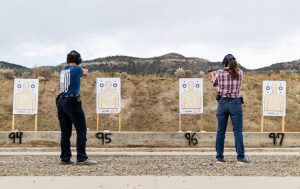Mark Cole
Francis Hopkinson of New Jersey was a true Renaissance Man – a polymath, a learned, refined, artistic and talented poet, essayist, song writer. He was a brilliant lawyer who became one of the first federal judges in America. And he was also a fearless patriot who placed his signature on the Declaration of Independence.
With his satirical writing and memorable melodies, Hopkinson was well-known and popular throughout New Jersey and the other colonies. But rather than merely basking in public affection and remaining “neutral,” Hopkinson turned his talents and his wit to the cause of American independence. His polemical essays – especially his allegorical satire tracing the events leading up to the First Continental Congress, A Pretty Story – played a significant role in turning the tide of public opinion towards the cause of independence.
His song Camp Ballad written in 1777 – was sung throughout the war for independence by American troops to boost sagging morale:
“Make room for America, another great nation, /
Arises to claim in your council a state.”
Later, he would revive the allegorical technique of A Pretty Story in The New Roof which promoted ratification of the Constitution.
His Seven Songs for Harpsichord, published in 1788, is considered the first collection of music printed in America. It was appropriately dedicated to his friend, George Washington.
Hopkinson was also a talented amateur artist and was most likely the designer of the American flag, with Betsy Ross being the seamstress who constructed the flag. Historians believe that it is this flag which flew in Philadelphia in 1776. One wonders how he must have felt seeing “his” flag being flown as he entered what we now call Independence Hall.
One wonders how he would feel today, seeing “his” flag still flown, same as before but with more stars.
Want more awesome history on our Founders?
Check out Mark’s book:
Lives, Fortunes, Sacred Honor: The Men Who Signed the Declaration of Independence













